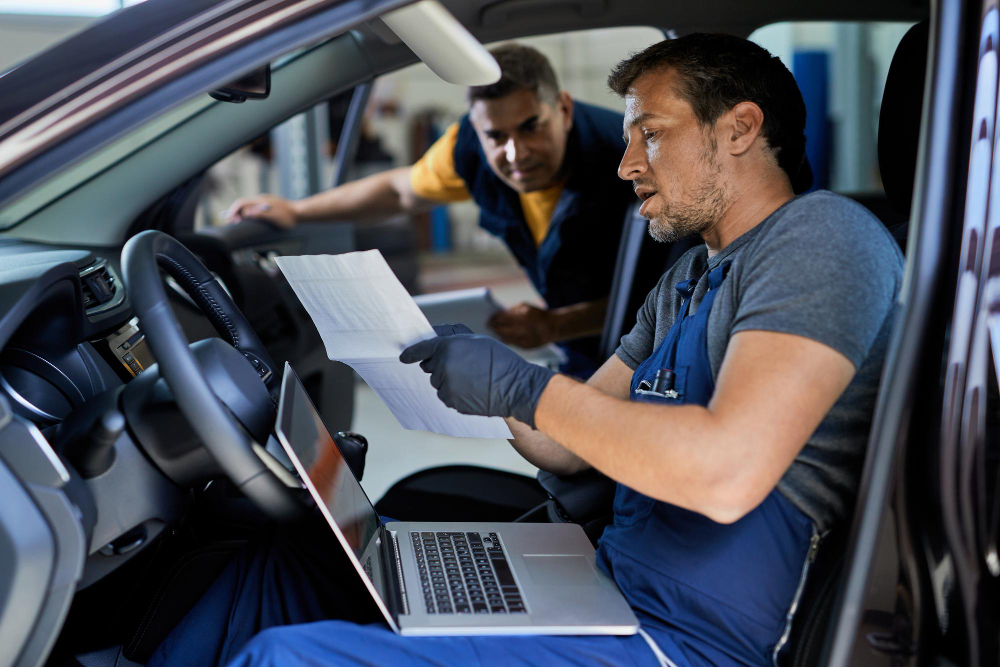In the current fast changing transportation world, safety of a fleet is not a priority but a need. Fleet managers are looking more and more to fleet safety analytics with a growing focus on accident minimization, enhancement of operational efficiency, and cost reduction. These new technologies provide useful solutions that the organizations can use to better manage their fleets without neglecting the issue of safety.
Truxup is dedicated to providing innovative solutions capable of enabling fleet operators to control, examine, and advance their fleets in regard to safety. In this paper, we are going to immerse ourselves into the realm of fleet safety analytics and explore the significance of truck fleet analytics, predictive analytics to fleet safety, and how fleet safety and behavior analytics can help to achieve improved road safety performance.
What is Fleet Safety Analytics?
Fleet safety analytics is the application of data-driven approaches and methods to evaluate and improve the safety behavior of a vehicle fleet. These analytics combine several pieces of data, including the road conditions, vehicle performance, driver behaviour, and the environment, to deliver actionable information to reduce the number of accidents and enhance the operational efficiency. Fleet safety analytics is a new reality in fleet management, as with technological change, it can be viewed as an active method of maintaining safety, rather than merely a response mechanism that works after the event has taken place.
The Reason Why Fleet Safety Analytics is a Necessary tool
Fleet safety analytics may not be the most significant part of fleet management, but it is crucial when working with multiple large fleets. Data-driven insights allow the fleet managers to track the tendencies, reveal the possible risks, and implement preventing measures to make sure that drivers, cars, and the overall population are safe. Through predictive analytics on fleet safety, companies can react proactively to avoid accidents as they can identify the risks before they grow, preventing accidents.
Furthermore, the analytics of fleet safety can result in high cost savings, as it will help to optimize fuel consumption, decrease the costs of maintenance, and avoid the expensive accidents. These insights can be used by the fleet managers to optimize operations, better route planning, and driver training, which result in improved performance in general.
A Closer Look on Truck Fleet Analytics
Fleet safety analytics, in turn, consists of truck fleet analytics which is the performance and safety of trucks in a fleet. As the work of truckers is large and complicated, numerous parameters can be observed to facilitate the process, including fuel efficiency, health of their vehicles, and drivers to avoid any complications.
Truck fleet analytics allow real time insight on critical performance indicators (KPI) including:
*Fuel usage: Monitoring fuel efficiency will assist in establishing where the fuel is being wasted and this will result in the development of more sustainable driving habits.
*Vehicle maintenance: This includes taking care of the maintenance schedules and the health of the vehicle which ensures that trucks are at optimal condition whereby it avoids breakdowns and reduces the unplanned maintenance expenses.
*Driver behavior: The driver behavior is analyzed to determine the unsafe driver behavior which can result to accidents and other causes of wear and tear of the vehicles.
Through truck fleet analytics, fleet managers are able to make sound decisions resulting in safer and cost-effective operations. This degree of understanding is especially useful when it comes to large fleet management in which it is virtually impossible to manually track every vehicle.
Introduction to Predictive Analytics of Fleet Safety
Predictive analytics is a savior of fleet safety that provides fleet managers with the option to anticipate all the possible risks and hazards prior to their occurrence. Fleet safety predictive analytics processes are based on predicting the likelihood of safety concerns in advance (when and where) using historical data, machine learning algorithms, and statistical models.
As an example, predictive analytics can be used to determine the patterns in driver behavior or vehicle performance that indicate a higher risk of an accident. Predictive models are able to predict potential risks based on the analysis of certain data associated with the speed, braking patterns and the conditions of the road, and offer recommendations on how these risks could be mitigated. This can be used to improve the efficiency of an operation not only by improving its safety but also by optimizing the maintenance scheduling and minimizing breaks.
The predictive analytics advantages in fleet safety are
1. Lower accident possibilities: The predictive models can be used to predict when a vehicle is most likely to be exposed to the hazardous conditions, this is done by the fleet managers, who can then preemptively change routes or schedules.
2. Better driver training: Predictive analytics can be used to improve driver training programs by determining which aspects of hazardous driving should be addressed in the training.
3. Optimized maintenance plans: Predictive analytics will be able to predict the time when a car requires maintenance before it breaks down and will save the possibility of expensive maintenance and repairs.
In general, fleet safety predictive analytics allows companies to make smarter and more data-driven decisions that reduce risks and enhance safety.
Understanding Driver Influence
Driver behavior is one of the most important aspects of the safety of the fleet. The concept of fleet safety and behavior analytics is aimed at controlling and examining the way drivers drive their cars. Driving habits that are not safe, like speeding, abrupt lane changes, and rough braking, may result in high possibilities of accidents and the cost of operation may be increased to a greater level.
Due to the use of advanced analytics, fleet managers may monitor driver activity and evaluate it in real-time. The information will enable more customized interventions, be it giving feedback to a driver, offering further training, or reorganizing the driving schedule in order to reduce the dangers. Having the culture of safe driving in the long run will help to reduce the number of accidents, enhance fuel efficiency, and overall improve the performance of the fleet.
As an example, the telematics systems can control the speed, braking, and acceleration patterns of a driver. They can be used as insights to identify unsafe driving practices that can be countered by an intensive driver-training course or remodeled driving paths. By monitoring the drivers consistently, the fleet managers would be in a position to make sure that their drivers observe high levels of safety.
Enhancing Safety on the Road
The fleet road safety analytics considers all the external issues that impact the safety of the fleet, including road conditions, weather, and traffic patterns. Through the real-time information provided by GPS, weather forecasts, and roadside traffic management, the fleet managers would be able to have a clear picture of the dangers their cars are exposed to on the road.
This form of reviewing aids in the planning of safer routes and avoiding risky zones and scheduling driving time so that the maximum safety is achieved. An example is when a fleet is passing through a region that is usually affected by heavy rain or ice, the fleet managers are able to reroute the vehicles to prevent accidents or delays.
The fleet road safety analytics can also give information on the hotspots of accidents. As a fleet manager, by establishing these places, he can prevent these places or educate the drivers on how to avoid such places in order to drive safely through the dangerous areas.
The Future of Fleet Safety Analytics
With the ongoing improvement in the field of technology, the analytics of fleet safety will only continue to improve. The emergence of artificial intelligence (AI) and machine learning (ML) is likely to transform the safety of fleets and make it even more accurate and real-time. Such technologies will improve predictive analytics, and the fleet managers will be able to predict and prevent the safety risks more precisely.
Moreover, the Internet of Things (IoT) devices and telematics will also be integrated to provide an even more profound level of data collection and analysis. Fleet management will be more efficient and proactive because there will be real-time monitoring of vehicle health, driver performance, and conditions.
Keeping abreast of these technological changes will be a major indicator of the company remaining competitive in the fleet management business environment. Continuously enhancing the tools and solutions that can be used to achieve fleet safety, Truxup will do everything to guarantee a safe fleet of its clients.
A Data-Driven Approach
The future of the fleet safety is becoming more and more dependent on the data and advanced technologies as we look forward. Fleet safety analytics is not only a matter of today preventing accidents but rather about the future, which will be a safer and more efficient place. As the innovations in the field of artificial intelligence (AI) and machine learning (ML), as well as the Internet of Things (IoT) continue to improve, the capacity to predict, monitor, and mitigate safety risks will only become more streamlined and proactive, thus fleet management will get even smoother.
Truck fleet analytics will further develop, providing an increased amount of accurate data about the health of vehicles, drivers, and the environment. This ever-increasing amount of data will allow fleet managers to optimize operations, increase safety and reduce costs as never before.









